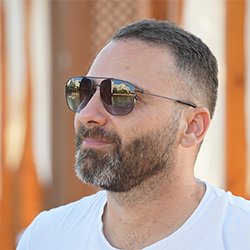Crete, the largest Greek island, has been the origin location to many notable people throughout history. The people of Crete have made significant contributions to various fields, including art, cuisine and science. The Palace of Knossos was the ceremonial and political center of the Minoan civilization on Crete. It was used as a central storage point, administrative and religious center from around 1700 to 1400 BC. The people of Crete built the palace and used it for several centuries. Scientists from Crete have also made groundbreaking discoveries, with individuals like Eleftherios Venizelos, a prominent leader in modern Greek history and Nikos Kazantzakis, a computer scientist known for his work on computational complexity. Other notable Cretans include writers, musicians and athletes with international recognition. The people of Crete have demonstrated their talent, creativity and dedication across various disciplines, making the island proud of its native sons and daughters.
Listed below are the famous Cretans.
- King Minos: King Minos, a legendary figure in Greek mythology, ruled over Crete and is credited with establishing the Minoan civilization. King Minos played a crucial role in its history and mythology. His legacy includes establishing a code of laws and serving as one of the judges in the Greek underworld after his death.
- El Greco (Domenikos Theotokopoulos): El Greco, born Domenikos Theotokopoulos in Crete, was pivotal in the Cretan Renaissance, merging Byzantine and Italian Renaissance influences. Despite being born in Crete, he spent most of his career in Italy and Spain, producing celebrated works like “The Burial of Count Orgaz”.
- Nikos Kazantzakis: Nikos Kazantzakis, born in Crete, blended Byzantine and Western Renaissance styles in his writings, becoming a prominent figure in the Cretan Renaissance. His works, including “Zorba the Greek” and “The Last Temptation of Christ”, are famous for their spiritual intensity and modern themes.
- Eleftherios Venizelos: Eleftherios Venizelos, born in Crete, played a pivotal role in the island’s independence and its union with Greece. As Prime Minister, he expanded Greece’s territory and aligned it with the Allies in World War I.
- Psarantonis: Psarantonis, born in Crete, is famous for preserving and promoting traditional Cretan music, particularly the lyra. His skills and style have gained international recognition, making him a cultural ambassador for Crete.
- Maro Douka: Maro Douka, born in Chania, Crete, is celebrated for her contributions to modern Greek literature. Her novels, blending Western European and Greek literary techniques, explore identity and societal change themes in Greece.
- Odysseas Elytis: Odysseas Elytis, born in Heraklion, Crete, drew inspiration from his Cretan roots to become a prominent poet of the Cretan Renaissance. His poetic style, blending Byzantine traditions with modern influences, earned him the Nobel Prize in Literature.
1. King Minos
King Minos was a legendary ruler of Crete in Greek mythology. He was the son of Zeus and Europa, born on the island of Crete. Minos lived and ruled from the city of Knossos, located on the northern coast of Crete. King Minos played a significant role in the mythology and history of Crete. He is credited with establishing the Minoan civilization, named after him, which flourished on the island during the Bronze Age. Minos obtained the Cretan throne with the aid of the god Poseidon and expanded his rule over the Aegean islands, colonizing many and eliminating piracy. The construction of impressive architectural marvels, including the famous Labyrinth, which the skilled architect Daedalus designed, marked his reign. The Labyrinth was built to imprison the Minotaur, a half-man, half-bull creature born from the unnatural union between Minos’ wife, Pasiphae and a bull. Minos’ most famous accomplishment was establishing a code of laws and a system of justice, which earned him a reputation as a wise and fair ruler. After his death, Minos became one of the three judges of the dead in the Greek underworld, alongside Aeacus and Rhadamanthys, his brothers.
2. El Greco (Domenikos Theotokopoulos)
El Greco, whose full name was Domenikos Theotokopoulos, was born on Wednesday, October 1, 1541, in Candia, now known as Heraklion, on the Greek island of Crete. At that time, Crete was a Venetian territory. Theotokopoulos spent his early years and received his initial artistic training as an icon painter in Crete. Records from 1566 refer to him as a master painter on the island. He lived in Crete until around 1567, when he departed for Venice.
Theotokopoulos, later known as El Greco, played a significant role in establishing the Cretan Renaissance when Crete became an essential center of post-Byzantine art and culture. He trained and became a master in the tradition of Byzantine iconography on Crete before traveling to Venice and later to Rome to study the Western Renaissance style.
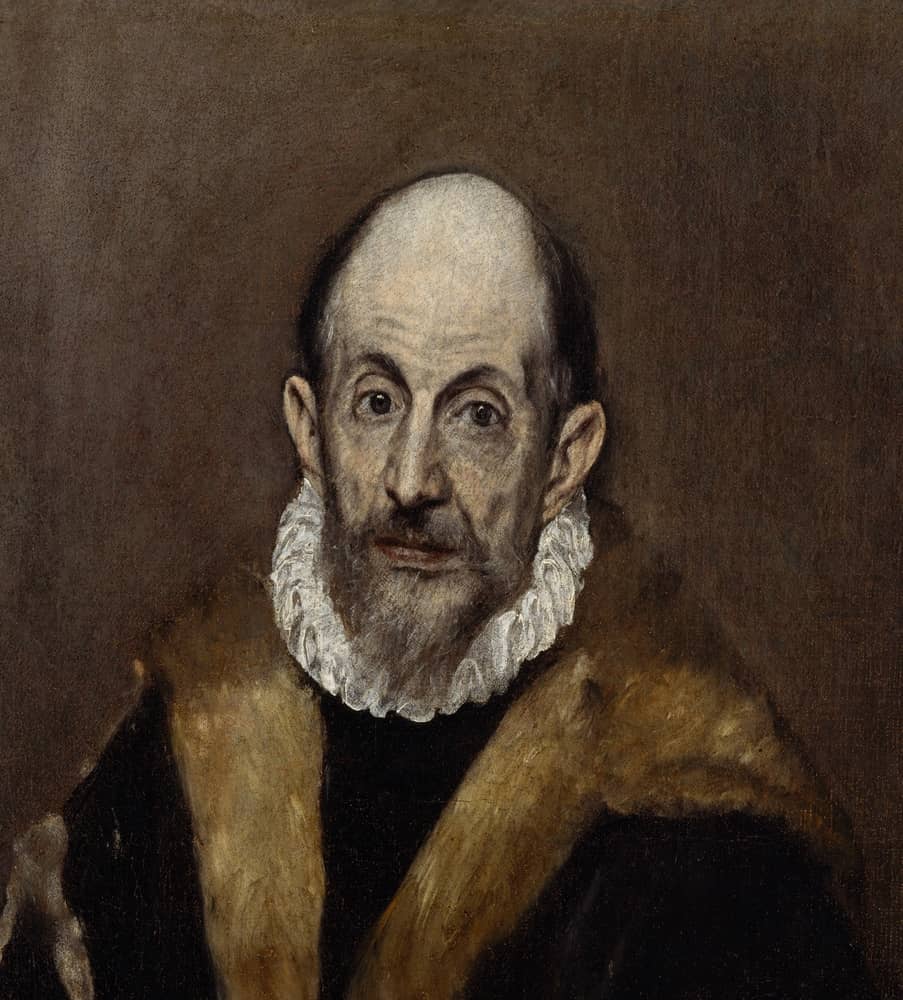
El Greco’s most significant accomplishment was his ability to synthesize the Byzantine traditions of his early training with the artistic innovations of the Italian Renaissance. This unique fusion of styles is evident in his mature works, characterized by elongated figures, bold colors and a sense of spiritual intensity. Despite being born and trained in Crete, El Greco spent most of his career in Italy and Spain, producing his most celebrated paintings, such as The Burial of Count Orgaz and View of Toledo. He is regarded as one of the most influential painters of the Spanish Renaissance and a precursor to modern art movements like Expressionism and Cubism
3. Nikos Kazantzakis
Nikos Kazantzakis was born on Sunday, February 18, 1883, in Heraklion, Crete, which was then part of the Ottoman Empire. Nikos Kazantzakis was one of the most important Greek writers and philosophers of the 20th century. Kazantzakis was a prolific writer whose works covered a wide range including philosophic essays, travel books, tragedies, translations, lyric poetry, and novels. Some of his most famous novels include Zorba the Greek, Freedom or Death, The Greek Passion, and The Last Temptation of Christ. He is also known for his epic poem The Odyssey, a 33,333 line sequel to Homer’s epic.
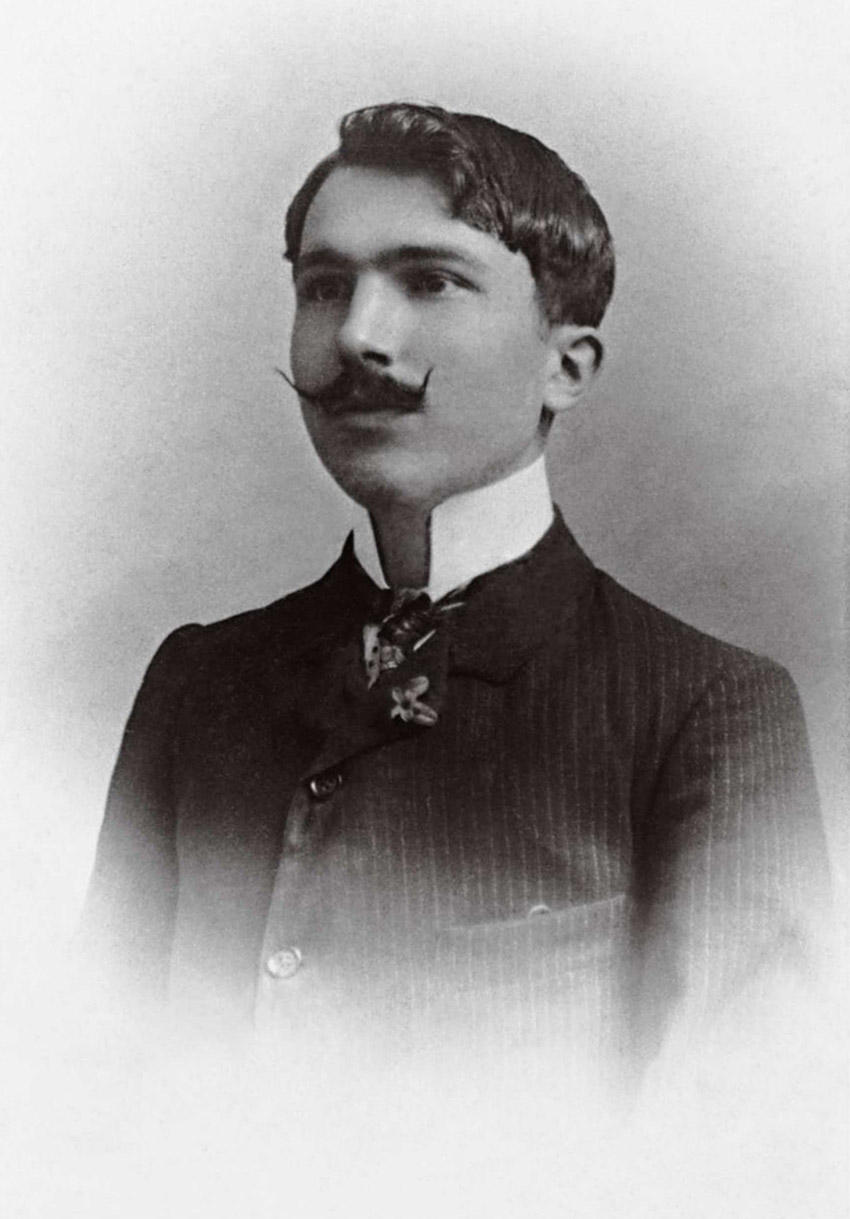
He spent his early years and received his initial education in Crete. Kazantzakis lived on the island until around 1902, when he left to study law at the University of Athens. After completing his studies, he traveled extensively, living in various countries such as France, Germany, Italy and the Soviet Union. He frequently returned to Crete throughout his life. Kazantzakis passed away on October 26, 1957, in Freiburg, Germany, but his remains were eventually brought back and buried on the Martinengo Bastion in Heraklion, Crete. Kazantzakis was nominated for the Nobel Prize in Literature nine times but never won, losing out to Albert Camus by one vote in 1957. Though he was initially controversial, Kazantzakis is now widely considered one of the most important Greek literary figures of the modern era.
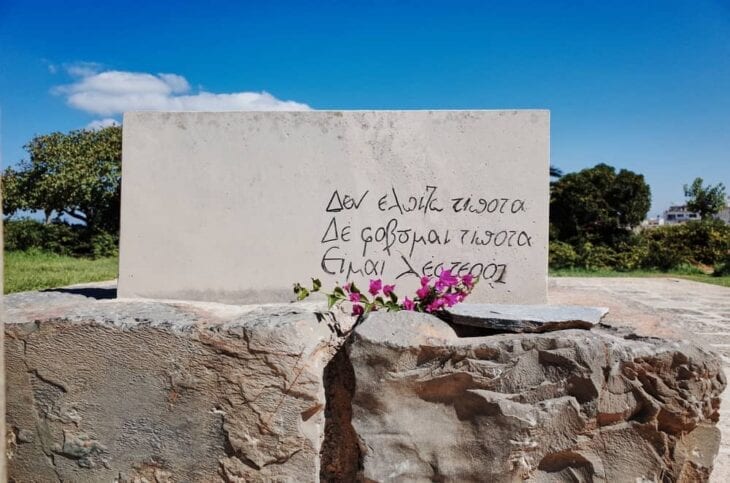
Nikos Kazantzakis played a significant role in establishing the Cretan Renaissance, a period when Crete became an important center of post-Byzantine art and culture. He trained and became a master in the tradition of Byzantine iconography on Crete before traveling to other parts of Europe to study Western Renaissance styles. Kazantzakis’ most significant accomplishment was his ability to synthesize the Byzantine traditions of his early training with the artistic innovations of the Italian Renaissance. This unique fusion of styles is evident in his mature works, characterized by spiritual intensity. Despite being born and trained in Crete. He is regarded as one of the most influential writers of the 20th century and a precursor to modern art movements like Expressionism and Cubism.
4. Eleftherios Venizelos
Eleftherios Venizelos was a prominent Greek statesman and political leader who played a pivotal role in the history of modern Greece in the early 20th century. Eleftherios Venizelos was born on Tuesday, August 23, 1864, in the village of Mournies, near Chania, on the island of Crete, which was then part of the Ottoman Empire. He spent his early years and received his initial education in Crete. Venizelos lived on the island until around 1910, when he moved to Athens after being invited to become Prime Minister of Greece. He frequently returned to Crete throughout his life. Venizelos passed away on March 18, 1936, in Paris, France, while in self-imposed exile, but his remains were eventually brought back and buried in Chania, Crete.
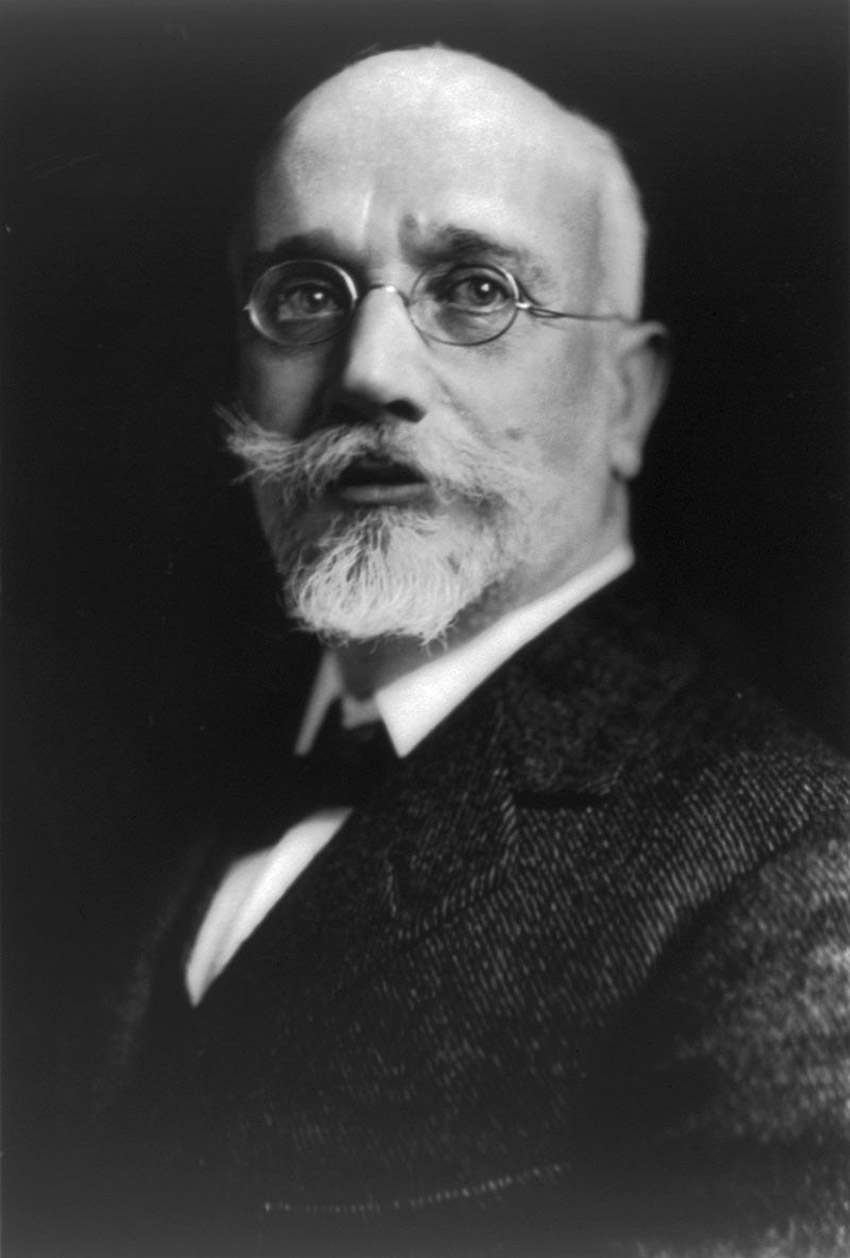
Eleftherios Venizelos played a pivotal role in the struggle for Cretan independence from Ottoman rule and the subsequent union of Crete with Greece. He served as a minister in the autonomous Cretan State from 1899 to 1901 but later clashed with Prince George, the High Commissioner, over the issue of enosis (union with Greece). Venizelos led the Theriso revolt in 1905, forcing Prince George’s resignation and paving the way for Crete’s eventual union with Greece in 1913. His biggest accomplishment was doubling Greece’s territory and population through his diplomatic efforts and military victories during the Balkan Wars of 1912-1913. As Prime Minister of Greece from 1910 to 1920 and 1924 to 1935, Venizelos played a crucial role in expanding the Greek state, incorporating territories with Greek populations such as Epirus, Macedonia, Thrace and the Aegean islands. He also aligned Greece with the Allies during World War I, securing favorable terms at the Paris Peace Conference.
Eleftherios Venizelos was the most influential Greek political figure in the early 1900s, shaping the Greece’s dramatic transition from an Ottoman province into a modern European state through his diplomatic skill, liberal reforms, and advocacy for the “Great Idea” of Greek territorial expansion. He is considered one of the greatest statesmen in Greek history.
5. Psarantonis
Psarantonis is a Cretan folk musician, singer and performer of the Cretan lyra. Psarantonis is the nickname of Antonios “Antonis” Xylouris, was born on Monday, September 6, 1937, in the village of Anogia, located in the mountainous region of Crete, Greece. He spent his childhood and early years in Anogia, where he was first exposed to traditional Cretan music and the lyra, a bowed string instrument. Although he has lived most of his life on the island of Crete, he has traveled extensively for performances and tours. He currently resides in Anogia, the village where he was born. Psarantonis started playing the lyra at age 13 and recorded his first single in 1964. He is known for his unique vocal timbre and lyra playing style

Psarantonis is considered one of the most important and influential figures in preserving and promoting traditional Cretan music. He has played a crucial role in keeping the art of lyra performance alive and introducing it to new generations. Psarantonis is famous for his virtuosic skills on the Lyra and his unique playing style, which blends traditional elements with his interpretations. His music has transcended the borders of Crete and Greece, gaining international recognition and appreciation. Psarantonis’ most significant accomplishment is his lifelong dedication to the Cretan lyra and his contributions to the preservation and evolution of Cretan musical heritage. He has inspired countless musicians and ensured the continuity of this ancient art form. Psarantonis has represented Greece in numerous festivals and events worldwide, showcasing Crete’s rich cultural traditions to global audiences.
Psarantonis is considered a master of the Cretan lyra and a virtuoso of improvisation. His legacy in Cretan folk music has transcended the borders of Greece and Europe
6. Maro Douka
Maro Douka is a critically acclaimed Greek author known for her novels and short stories that often deal with history, politics and the female experience. She is considered part of the literary canon in modern Greek literature. Maro Douka was born in January 1947 in Chania. She spent her formative years in Chania before moving to Athens in 1966 to pursue higher education. Douka studied History and Archaeology at the University of Athens. Although she has resided in Athens for most of her adult life, she maintains strong ties to her birthplace, Crete.
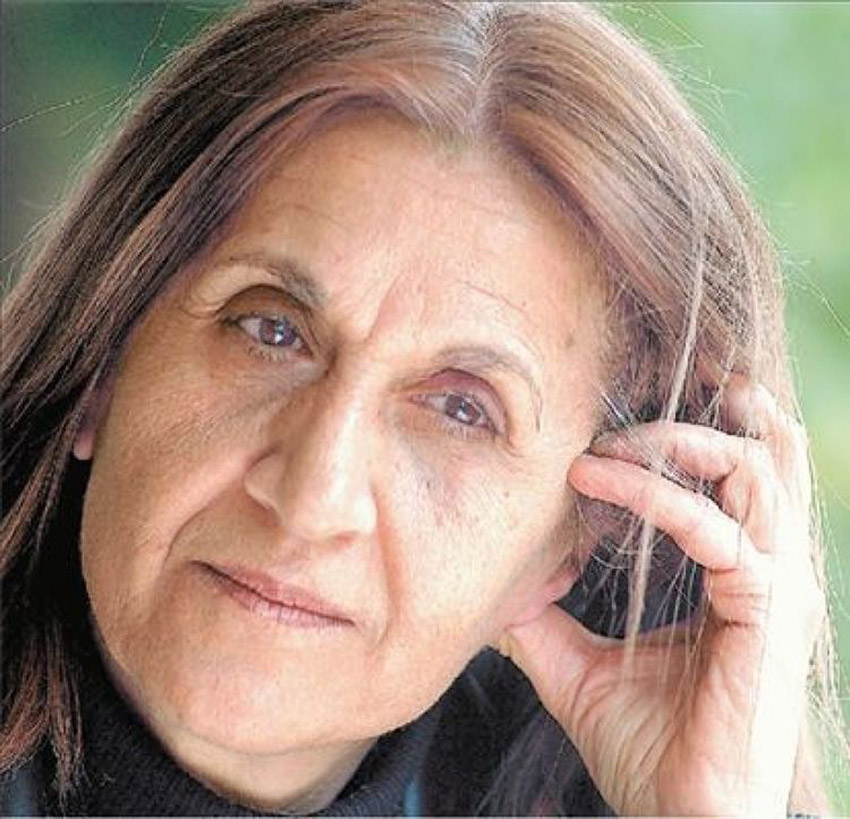
Maro Douka is considered one of the most influential writers of modern Greek literature. She belongs to the literary generation of the 1970s, a group of authors who began publishing their works during that decade. Douka’s debut novel, “Fool’s Gold”, published in 1974, was based on her imprisonment by the Greek military junta in 1967. Her works often explore identity, history and societal changes in Greece. Douka has received numerous accolades, including the Nikos Kazantzakis Prize from the Municipality of Heraklion for her novel “Ancient Rust” and the Balkanika Prize for Literature for “The Innocent and the Guilty”. Her biggest accomplishment is her ability to blend Western European and Greek literary techniques, creating a unique and original writing style. Douka’s novels have been praised for their prose clarity and insightful depiction of the transformations in Greek society.
7. Odysseas Elytis
Odysseas Elytis was a Greek poet, essayist and translator, considered one of the most important figures of 20th century poetry in Greece and worldwide. Odysseas Elytis was born on Thursday, November 2, 1911, in Heraklion, on the island of Crete. He spent his early childhood years in Heraklion before his family relocated to Athens when he was three. Although Elytis lived most of his life in Athens, he maintained strong ties with Crete, frequently visiting the island during summer vacations. He passed away in Athens on March 18, 1996, at 84. His role in establishing the Cretan Renaissance when Crete became an important center of post-Byzantine art and culture. He drew inspiration from his Cretan roots and the island’s rich heritage, blending elements of Byzantine traditions with modern artistic innovations.
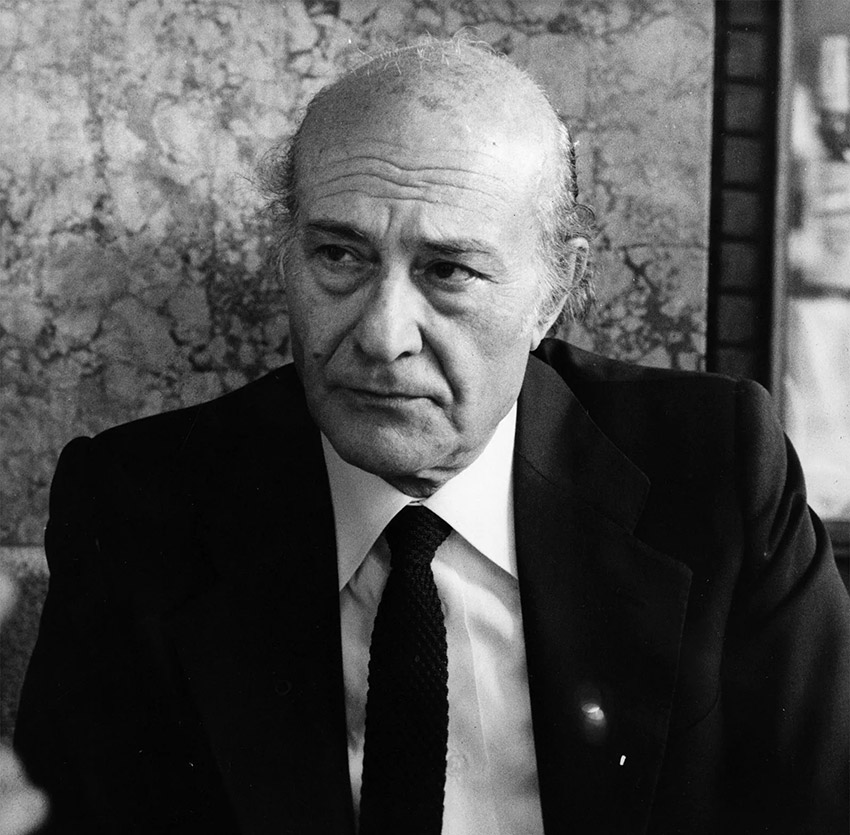
Odysseas Elytis’s most significant accomplishment was his ability to synthesize the influences of his early life on Crete with the Western literary movements he encountered later, creating a unique poetic style that celebrated the Greek landscape, mythology and history. His masterpiece, the epic poem “Axion Esti”, was hailed by the Swedish Academy as “one of twentieth-century literature’s most concentrated and ritually faceted poems”. In 1979, Elytis was awarded the Nobel Prize in Literature for his poetry, which the Academy recognized as depicting “with sensuous strength and intellectual clearsightedness modern man’s struggle for freedom and creativeness” against the Greek tradition.
8. Nana Mouskouri
Nana Mouskouri is an iconic Greek singer with a distinctive voice, multi-lingual repertoire, signature glasses and unparalleled commercial success as one of the top-selling artists of all time. Nana Mouskouri was born on Saturday, October 13, 1934, in Chania. Her father, Constantinos, worked as a film projectionist in a local cinema, while her mother was a cinema worker. Mouskouri spent her early years and received her education in Chania before moving to Athens with her family at a young age. She maintained strong ties with the island and frequently visited during her childhood and later years. Mouskouri currently resides in Switzerland but has not permanently lived in Crete since her youth.
Nana Mouskouri played a significant role in promoting Greek culture and music on a global scale. She is considered one of the most successful and influential Greek artists, having sold over 300 million records worldwide and recorded songs in various languages, including Greek, French, English, Spanish and German. Mouskouri’s music blended traditional Greek elements with contemporary styles, introducing the world to the rich musical heritage of her homeland, Crete. Her biggest accomplishment was her ability to transcend cultural boundaries and achieve international acclaim while remaining true to her roots. Mouskouri’s renditions of Greek folk songs and her collaborations with famous composers like Manos Hadjidakis and Mikis Theodorakis helped preserve and popularize Cretan and Greek music traditions. She became a cultural ambassador for Greece, particularly for Crete, where she drew inspiration from the island’s history and traditions.
9. Michalis Damaskinos
Michalis Damaskinos (also known as Michael Damaskinos or Michail Damaskenos) was a prominent Greek painter of the 16th century. Michalis Damaskinos was born 1530 in Rethymno on the island of Crete, which was then part of the Republic of Venice. He spent his early years and received his artistic training in Crete. Damaskinos lived and worked primarily in Crete, particularly in Rethymno and Heraklion, until around 1575, when he moved to Venice. He remained in Venice until his death around 1592. Michalis Damaskinos played a pivotal role in the Cretan Renaissance, a period of cultural flourishing on the island under Venetian rule.
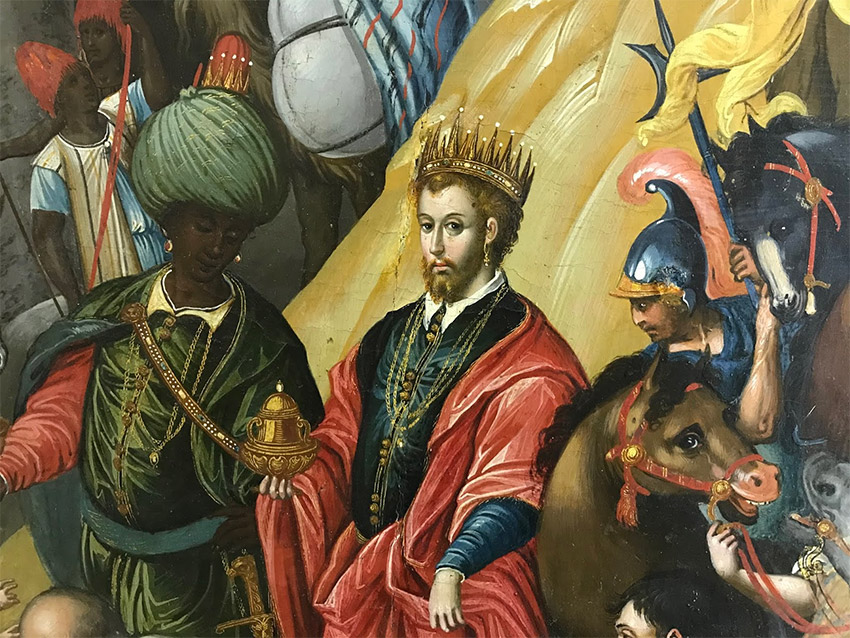
Michalis Damaskinos is considered one of the most significant painters of the Cretan School and a leading figure of the Greek artistic movement known as the Cretan Renaissance. Damaskinos’ most important accomplishment was his mastery of the Byzantine artistic tradition and his ability to synthesize it with the innovations of the Italian Renaissance. His works, characterized by a unique fusion of Byzantine and Western elements, exemplified the cultural synthesis that defined the Cretan Renaissance. Damaskinos’ paintings, such as the famous “Christ Blessing” and “The Virgin Hodegetria”, showcased his exceptional skill in rendering perspective, anatomy and naturalistic details while retaining the spiritual essence of Byzantine iconography. His artistic legacy profoundly influenced subsequent generations of Greek painters and solidified the Cretan Renaissance as a distinct artistic movement.
10. Nikos Xilouris
Nikos Xilouris, born on Tuesday, July 7, 1936, in the village of Anogia in the Mylopotamos region of Rethymno, was a famous Greek folk musician, singer and composer. He was born into a musical family, with his brothers Antonis Xilouris (Psarantonis) and Yiannis Xilouris (Psaroyiannis) also becoming famous Cretan musicians. Growing up, Xilouris witnessed the destruction of his village by German forces during World War II. At a young age, he acquired his first lyra, a traditional Cretan string instrument and began playing at local weddings and festivals. In 1958, at 22, he recorded his first song, “Mia microflora on perna”, which became a hit and launched his career. Xilouris moved to Athens in 1969, gaining national recognition and becoming a symbol of resistance against the Greek military junta that ruled from 1967 to 1974. He collaborated with notable composers such as Giannis Markopoulos and Mikis Theodorakis, creating music that captured the essence of the Greek spirit during those challenging times. Xilouris passed away on February 8, 1980, at the age of 43, in Piraeus, Greece, after a battle with cancer. He was laid to rest in the First Cemetery of Athens.
Nikos Xilouris is considered one of the most influential figures in Greek folk music and his contributions to Cretan music, in particular, are immeasurable. His music preserved and promoted traditional Cretan folk songs and infused them with contemporary elements, making them accessible to a broader audience. Xilouris’s powerful voice and dynamic performances became synonymous with the struggles and aspirations of the Greek people, especially during the years of the military dictatorship. His songs, which often featured themes of love, loss and resistance, resonated deeply with the public and continue to be celebrated today. Xilouris’s collaborations with other prominent Greek musicians further solidified his influence and helped to establish Cretan music as an integral part of the nation’s cultural heritage.
11. Ioannis Vlachos
Ioannis Vlachos or Daskalogiannis was a prominent Cretan rebel leader who led an uprising against Ottoman rule in the 18th century. Ioannis Vlachos, was born in 1730 in the village of Anopolis in the Sfakia region of Crete. He was a wealthy shipowner and merchant who held a distinguished position in Sfakia, serving as town clerk in 1750 and chairman of the area in 1765. Daskalogiannis owned four three-mast merchant ships that sailed between ports in the Mediterranean. In 1770, he started planning a revolutionary movement to liberate Crete from Ottoman rule. In April of that year, Daskalogiannis led the people of Sfakia in an uprising against the Ottomans, gathering 2,000 rebels at the Krapi plateau. They fought bravely in the mountains and gorges around Sfakia. Still, the harsh winter and lack of expected support from Russia led Daskalogiannis to surrender in March 1771, hoping to ease the situation for his compatriots. The Pasha of Candia (Heraklion) imposed a cruel punishment. On June 17, 1771, Daskalogiannis was publicly tortured, skinned alive and executed outside the harbor fortress of Heraklion. He endured the ordeal in silence while his brother was forced to watch, allegedly driving him insane. Daskalogiannis died in Heraklion in 1771.
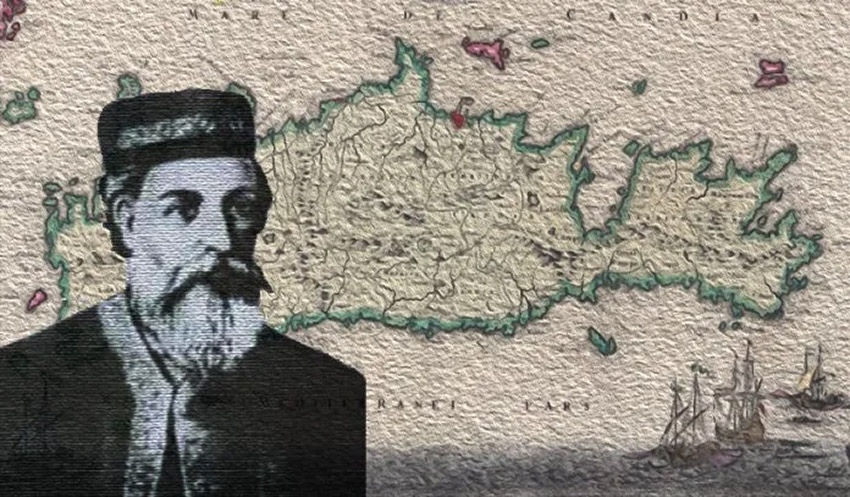
Daskalogiannis is a significant figure in the history of Crete and Greece, as his uprising against Ottoman rule in 1770 was the first important step towards the island’s liberation. Although the superior Turkish forces ultimately suppressed the revolt, Daskalogiannis’s sacrifice kept the hopes for freedom alive among the Cretan people. His bravery and tragic end inspired future revolutionary efforts, particularly the Greek War of Independence that began in 1821. Daskalogiannis’s legacy is deeply ingrained in Cretan culture, with numerous folk tales, songs and poems commemorating his life and deeds. The most famous is the epic ballad “To tragoudi tou Daskalogianni” (The Song of Daskalogiannis) by Barba-Pantzelios, composed in 1786. The international airport of Chania bears Daskalogiannis’s name and a memorial statue stands in his birthplace of Anopolis, serving as enduring reminders of his importance to Crete and its people.
12. Yiannis Markopoulos
Yiannis Markopoulos, born on Saturday, March 18, 1939, in Heraklion, Crete, was a famous Greek composer who passed away on June 10, 2023, in Athens at 84. He spent his childhood in Crete, where he was exposed to various musical influences, including Byzantine liturgy, Cretan traditional music and the sounds of the wider Eastern Mediterranean. Markopoulos took his first music theory and violin lessons at the local conservatory and played the clarinet in the municipal band. In 1956, he moved to Athens to further his music studies at the Athens Conservatoire while studying philosophy and sociology at Panteion University. As a student, Markopoulos composed music for theater, cinema and dance performances. In 1967, when a military dictatorship was imposed in Greece, Markopoulos left for London, where he enriched his knowledge under the English composer Elizabeth Lutyens and made the acquaintance of fellow Greek composers Jani Christou and Iannis Xenakis. He returned to Athens in 1969 and founded a musical ensemble composed of students and young intellectuals, which would go on to perform countless symphonies combining Greek elements with international sounds in his Lydra music studio.

Yiannis Markopoulos played a significant role in shaping the musical landscape of Greece, particularly during the 1970s. His unique style, which fused traditional Greek and harmonious melodies, captivated audiences and earned him international recognition. Markopoulos drew inspiration from his Cretan roots, early exposure to Byzantine and Cretan folk music and the Egyptian melodies he heard on the radio during childhood. He was a pioneer in combining traditional Greek instruments like the lyre and Centauri with the piano, creating a new genre of classical, international music he called “Return to the Roots”. Markopoulos’s most notable accomplishments include composing music for the poetry of Nobel Prize-winner Odysseas Elytis, scoring the BBC television series “Who Pays the Ferryman?” in 1977 and writing songs for the British National Theatre’s 1968 production of “The Tempest”. His discography features numerous albums, such as “Ithageneia”, “Thiteia”, and “Chroniko”, which showcase his distinct compositional style.
13. Vicenzos Cornaros
Vitsentzos Kornaros, also known as Vincenzo Cornaro, was born in March 1553 in Trapezonda, a village near Sitia in eastern Crete, which was then part of the Kingdom of Candia under Venetian rule. He came from a wealthy Venetian-Cretan aristocratic family, with his father working as a tax collector and his older brother as a customs officer. Kornaros spent most of his life in Candia (present-day Heraklion), the capital of Crete, where he moved after getting married. As an upper-class member, he received a good education and was exposed to Greek and Italian literature. Kornaros wrote in the Cretan dialect of Greek, the language spoken by most of the island’s population. He was a leading figure of the Cretan Renaissance, a period of cultural flourishing in Crete during the Venetian occupation from the 14th to the 17th century. Kornaros passed away in 1613 or 1614 in Candia at 60 or 61.
Vitsentzos Kornaros is considered one of the most significant poets in the history of modern Greek literature and a major contributor to the development of the Cretan Renaissance. His most famous work, Erotokritos, is a romantic epic poem with over 10,000 fifteen-syllable rhyming verses, making it one of the most extended works of Greek literature. Written around 1600, Erotokritos tells the story of the love between the young hero Rotokritos and the princess Aretousa, set in ancient Athens. The poem explores themes of love, friendship, honor and the instability of human fortune. It reflects the cultural fusion of Venetian and Greek elements that characterized Cretan society during the Renaissance. Erotokritos was first published in Venice in 1713 and has since become a classic of Greek literature, widely read and admired for its poetic beauty, vivid characters and universal themes. The poem has inspired numerous musical, theater and art adaptations and has significantly shaped modern Greek language and identity.
14. Manolis Rasoulis
Manolis Rasoulis was a prominent Cretan lyricist, music composer, singer, writer and journalist. Manolis Rasoulis was born on Friday, September 28, 1945, in Heraklion, the capital city of Crete, Greece. He grew up in Crete and later moved to Thessaloniki, where he spent much of his life. Rasoulis began his career as a journalist and writer but soon transitioned to music, becoming a composer, lyricist and singer. He frequently collaborated with famous Greek musicians such as Manos Loizos, Stavros Kougioumtzis, Nikos Xydakis and Christos Nikolopoulos, as well as famous singers like Vasilis Papakonstantinou, Haris Alexiou, Sokratis Malamas and Nikos Papazoglou. Rasoulis was known for his unique writing style and his ability to capture the essence of Greek culture and society through his lyrics. He passed away on March 5, 2011, at 65, in his apartment in the Toumba area of Thessaloniki. His death was estimated to have occurred more than a week before his body was discovered, likely due to a heart attack.

Manolis Rasoulis is considered one of the most important and influential figures in modern Greek music, particularly in songwriting and lyrics. His contributions to the Greek music scene have left a lasting impact on Cretan and Greek culture. Rasoulis’s lyrics often explored themes of love, loss, social issues and political commentary, resonating deeply with the Greek public. His collaborations with some of Greece’s most prominent composers and singers helped to shape the sound and direction of Greek popular music in the latter half of the 20th century. Rasoulis’s biggest accomplishment lies in his exceptional talent as a lyricist and his ability to create songs that have become an integral part of the Greek musical canon. Many of his songs, such as “Ola se thymizoun” (Everything Reminds Me of You) with music by Manos Loizos, have become timeless classics, beloved by generations of Greeks. His lyrics have been praised for their poetic depth, emotional resonance and social commentary, cementing his status as one of the greatest lyricists in Greek music history.
15. Giorgos Samaras
Georgios Samaras (also known as Giorgos Samaras) is a Greek former professional footballer who played as a striker or winger. Georgios Samaras was born on Thursday, February 21, 1985, in Heraklion, the capital city of the Greek island of Crete. In 1994, at 10, Samaras joined his boyhood club, OFI Crete, where his father was playing. He credits his father for helping start his football career, as his influence meant that Samaras trained every day during his childhood. In 2001, Samaras left Crete to join Dutch club Heerenveen.
Georgios Samaras is an essential figure in Crete and Greece due to his successful football career and his decision to represent Greece internationally, despite being eligible to play for Australia through his father’s birth in Melbourne. Samaras made his debut for the Greek national team in 2006 and went on to earn 81 caps, scoring nine goals. He represented Greece at Euro 2008, the 2010 World Cup, Euro 2012 and the 2014 World Cup. One of his most crucial goals for Greece came in a 2010 World Cup qualifier against Israel, which he scored in front of his hometown crowd in Heraklion. Samaras’ most significant accomplishment in his club career was helping Celtic FC win the Scottish Premier League title in 2008. He played for the Glasgow-based club from 2008 to 2014, making over 200 appearances and scoring 74 goals across all competitions. Samaras’ success at Celtic and his performances for the Greek national team made him a popular figure among fans in both Crete and Greece.

His father, Ioannis Samaras, was born in Melbourne, Australia, but moved to Greece at 13 and had a successful football career, playing for OFI Crete, Panathinaikos and the Greek national team. Samaras’ grandfather, also named Georgios, was one of the founding members of South Melbourne FC. Growing up, Samaras’ favorite footballer was Marco van Basten and he was also a keen basketball fan, often staying up late to watch his hero Michael Jordan play.
16. Konstantinos Mitsotakis
Konstantinos Mitsotakis (also known as Constantine Mitsotakis) was a prominent Greek politician who served as the Prime Minister of Greece from 1990 to 1993. Konstantinos Mitsotakis was born on Friday, October 18, 1918, in Chania, Crete, Greece. He was born into a prominent political family, with his father and grandfathers serving as members of parliament and his uncle being the famous statesman Eleftherios Venizelos. Mitsotakis studied law and economics at the University of Athens. During the Nazi occupation of Crete from 1941 to 1944, he was active in the resistance movement, which led to his arrest and death sentences on two occasions. Mitsotakis began his political career in 1946 when he was first elected to the Greek Parliament as a member of the Liberal Party. In the 1960s, he joined the Centre Union, a center-left coalition and served as the Minister of Finance in the government led by Georgios Papandreou. In 1965, Mitsotakis and other Centre Union deputies defected from the party to join pro-monarchist forces in a series of coalition governments, eventually leading to a military dictatorship in 1967. The military government arrested Mitsotakis and fled to Paris, where he actively opposed the regime. He returned to Greece in 1973 and founded the New Liberal Party in 1977. In 1978, he joined the New Democracy Party led by Konstantinos Karamanlis and served in his government. Mitsotakis became the leader of New Democracy in 1984 and served as the Prime Minister of Greece from 1990 to 1993. He passed away on May 29, 2017, in Athens at the age of 98.
As a native of Crete, he maintained strong ties to the island throughout his life and enjoyed substantial support from Cretan voters and the Cretan population living in Athens. Mitsotakis’s political career spanned over 50 years, during which he held several key positions in the Greek government. His most notable accomplishment was serving as the Prime Minister of Greece from 1990 to 1993. During his tenure, Mitsotakis implemented economic reforms and pursued policies to modernize the country and strengthen its ties with the European Community. He strongly advocated for European integration and was crucial in Greece’s entry into the European Economic Community in 1981. Mitsotakis’s legacy extends beyond his political achievements, as he was also known for his interest in preserving the environment and his passion for Cretan antiquities. He and his wife donated many Minoan and other Cretan artifacts to the Greek state. Mitsotakis’s son, Kyriakos Mitsotakis, followed in his father’s footsteps and became the Prime Minister of Greece in 2019, further cementing the family’s political legacy in Greece and Crete.
17. Alexis Minotis
Alexis Minotis was a prominent Greek actor and stage director. Alexis Minotis, born Alexandros Minotakis on Wednesday, August 8, 1900, in Chania, Crete, was a Greek actor and director. He began his career as an amateur actor in Athens in 1921, collaborating with the Veakis and Nezer companies. Minotis first appeared on stage in his native Crete as Chorus Leader and later as Messenger in Sophocles’ “Oedipus Tyrannus”. From 1925 to 1930, he worked closely with the famous Greek actress Marika Kotopouli in her theater. During this period, Minotis portrayed the tremendous Shakespearean roles in “The Merchant of Venice”, “King Lear”, and “Macbeth”. They played the title role in “Hamlet”, marking the first time the play had been staged in Greece. He also expanded his talents by directing ancient Greek tragedies and modern plays. In 1940, Minotis married actress Katina Paxinou and together, they appeared in many productions at the National Theatre of Greece in Athens. He later appeared in Hollywood films such as Alfred Hitchcock’s “Notorious” (1946) and “Boy on a Dolphin” (1957) with Sophia Loren. Minotis passed away on November 11, 1990, in Athens at 90.
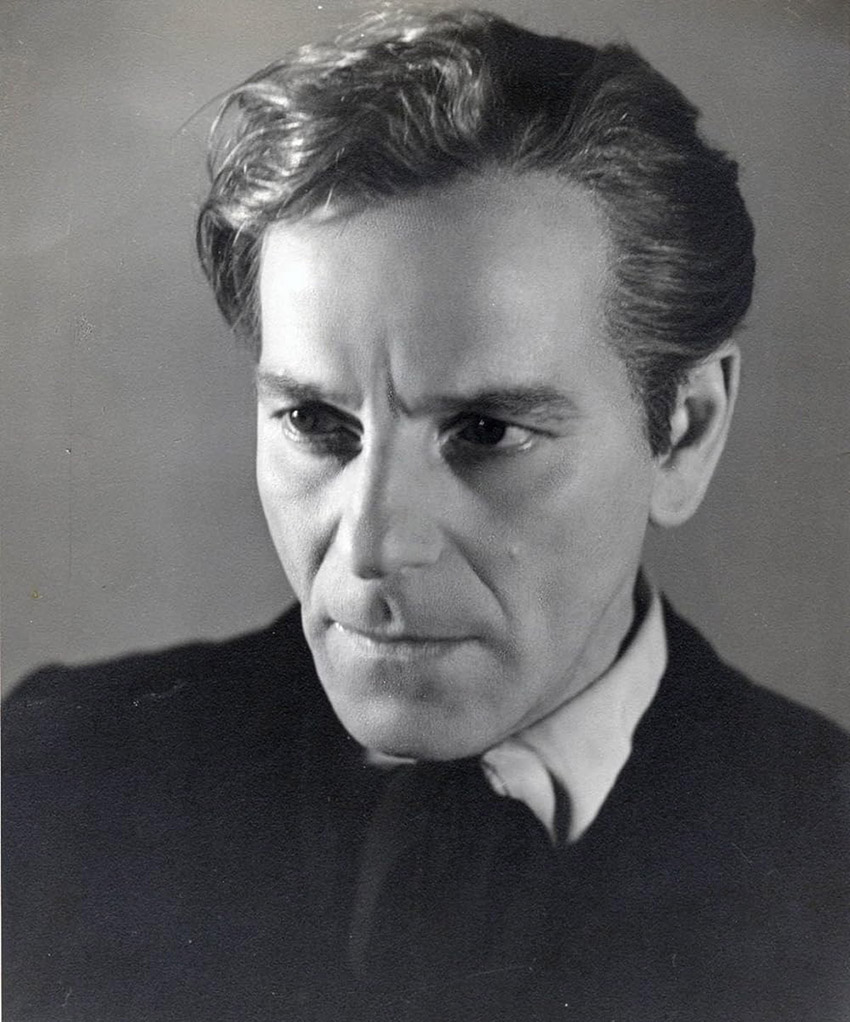
Alexis Minotis played a significant role in shaping Greece’s cultural landscape, particularly in theater. His contributions to the revival of ancient Greek tragedy in the 1930s, first as an actor and later as a stage director, left an indelible mark on the country’s theatrical tradition. Minotis’s collaborations with his wife, Katina Paxinou, at the National Theatre of Greece further solidified his influence and helped establish the institution as a cornerstone of Greek culture. They produced revivals of classic plays in ancient outdoor Greek theaters and translated modern plays, bringing new life to the country’s rich theatrical heritage. Minotis’s most significant accomplishment was his ability to bridge the gap between ancient Greek theater and modern audiences, making the works of Sophocles, Euripides and other classical playwrights accessible and relevant to contemporary viewers. His interpretations of Shakespearean roles and his direction of ancient and modern plays demonstrated his versatility and skill as an artist.
18. Aristidis Metallinos
Aristeidis Metallinos was a Greek sculptor who lived from 1908 to 1987. Aristides Metallinos was born on 1908, Ano Korakiana, Greece, then part of the Ottoman Empire. He was born into a wealthy family and received his early education in Chania before moving to Athens to study law at the University of Athens. After completing his studies, Metallinos returned to Crete and began practicing law in Chania. He quickly became involved in local politics and was elected as a member of the Cretan Parliament in 1920. Metallinos served as a member of parliament for several terms and held various positions within the government, including Minister of Justice and Minister of the Interior. During World War II, he was active in the resistance movement against the Nazi occupation of Crete. After the war, Metallinos continued to serve in the Greek government and was appointed the Governor-General of Crete in 1946, a position he held until 1950. He passed away on March 15, 1964, in Chania at 76.
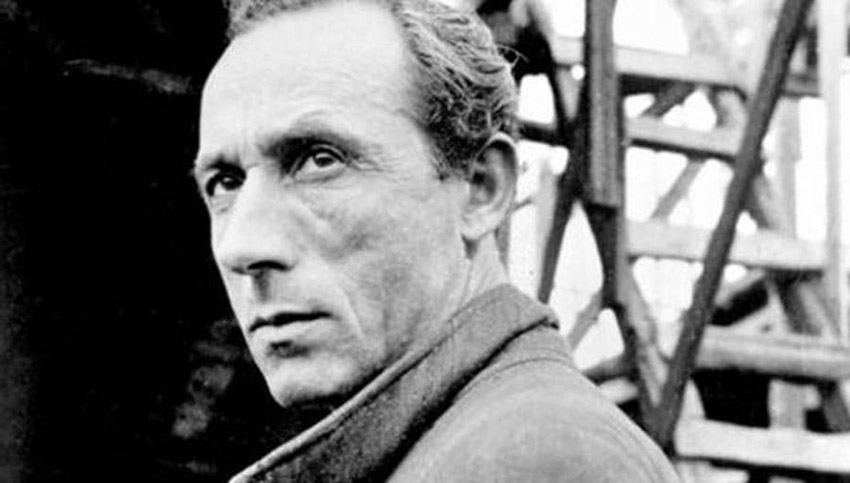
Aristidis Metallinos significantly shaped Crete’s political and social landscape during the first half of the 20th century. As a member of the Cretan Parliament and later as a minister in the Greek government, he worked tirelessly to promote the interests of Crete and its people. Metallinos strongly advocated for Cretan autonomy and fought for the island’s rights within the broader context of Greek politics. He was also instrumental in the development of infrastructure and public services in Crete, particularly in the areas of education and healthcare. Metallinos’s most significant accomplishment was arguably his role in the resistance movement against the Nazi occupation of Crete during World War II. As a prominent political figure and respected leader, he used his influence to organize and support the Cretan resistance, which was crucial in disrupting German operations on the island and ultimately contributed to the Allied victory in the Mediterranean theater. Metallinos’s bravery and leadership during this challenging period earned him the admiration and respect of the Cretan people and he is remembered today as one of the island’s most important political figures of the 20th century.
19. Manos Katrakis
Manos Katrakis was a prominent Greek actor of theater and film. Manos Katrakis was born on Friday, August 14, 1908, in Kastelli Kissamou, a town in the Chania regional unit of Crete, Greece. He was the youngest of five children born to Charalambos Katrakis, a merchant and his wife, Irini. In 1919, when Katrakis was 11 years old, his family moved to Athens, where he would later begin his acting career. Katrakis made his stage debut at 18 with the theater group “Young” in the play “To Love”. His talent and charisma impressed director Kostas Leloudas, leading to Katrakis landing the leading role in the 1929 silent film “The Banner of 1821” just a year later. Throughout his career, Katrakis appeared in numerous notable films, including “Marinos Kontaras” (1948), “A Neighborhood Named ‘The Dream'” (1961), “Electra” (1962) and “Enas Delikanis” (1963). He also participated in hundreds of events where he recited Greek poetry and literature, with his unique voice leaving a lasting impact. Katrakis passed away on September 3, 1984, in Athens at the age of 76, shortly after completing filming for Theodoros Angelopoulos’s “Voyage to Cythera”.
Manos Katrakis was important in developing Greek theater and cinema, becoming one of his generation’s most iconic and influential actors. His contributions to the arts helped elevate Cretan artists’ status and bring attention to the island’s rich cultural heritage. Katrakis’s performances in classical and contemporary works showcased his versatility and ability to connect with audiences, earning him critical acclaim and numerous accolades. At the San Francisco International Film Festival, he was awarded the Best Actor prize for portraying Creon in “Antigone” (1961). He received recognition at the Thessaloniki Film Festival for his performance in “A Neighborhood Named ‘The Dream'” (1961). Katrakis’s most significant accomplishment was his lasting impact on Greek culture and his ability to inspire future generations of actors and artists. His dedication to his craft, powerful stage presence and distinctive voice made him a beloved figure in Greece and cemented his status as one of the nation’s most celebrated performers.
20. Nikolaos Sifounakis
Nikolaos Sifounakis is a Greek politician who has held several prominent positions, born on Wednesday, December 21, 1949, in Rethymno, a city located on the northern coast of the island of Crete, Greece. He grew up in Crete and later pursued a political career, becoming a prominent figure in Greek and European political circles. Sifounakis served as a Member of the European Parliament (MEP) from 2004 to 2007, representing Greece and sitting with the Party of European Socialists group. During his time in the European Parliament, he was elected Chair of the Committee on Culture and Education on July 23, 2004. In the 2007 Greek legislative election, Sifounakis was elected to the Greek Parliament, representing the constituency of Lesbos. As a result of his election to the national parliament, he resigned from his position in the European Parliament. Throughout his political career, Sifounakis also held the position of Minister for the Aegean in the Greek government.

Nikolaos Sifounakis played a significant role in promoting the interests of Crete and the Aegean islands in Greek and European politics. As Minister for the Aegean, he worked to address the unique challenges faced by the islands, such as transportation, infrastructure and economic development. Sifounakis’s efforts helped to bring attention to the needs of Crete and the Aegean islands at the national and international levels. One of his most notable accomplishments was improving relations between Greece and Turkey following the devastating earthquakes that struck both countries in 1999. Sifounakis emphasized the positive progress made in the aftermath of the disasters and highlighted the importance of cooperation between the two nations. His work in this area helped to foster a spirit of understanding and solidarity between Greece and Turkey during a difficult time.
21. Pantelis Prevelakis
Pantelis Prevelakis was a novelist, poet, dramatist, essayist and art critic, considered one of the leading Greek prose writers. He was born on Wednesday, March 3, 1909, in the village of Pigi in the Rethymno Prefecture of Crete, Greece. He spent his childhood and most of his life in Pigi and the nearby city of Rethymno. Prevelakis passed away on December 28, 1986, in Athens at 77. Pantelis Prevelakis contributed significantly to Crete and Greece’s literature and cultural heritage. He was a famous writer, poet and playwright, with most of his works set in Crete and exploring the island’s rich history and traditions. Prevelakis’ literary works, including novels, short stories and plays, vividly depicted the lives and struggles of the Cretan people, capturing the essence of their resilience and spirit. His writings played a crucial role in preserving and promoting the cultural identity of Crete, earning him widespread recognition and acclaim. One of Prevelakis’ notable accomplishments was establishing the Renaissance Festival in Rethymno, a cultural event that celebrated the city’s Venetian and Ottoman heritage through various artistic performances and exhibitions.
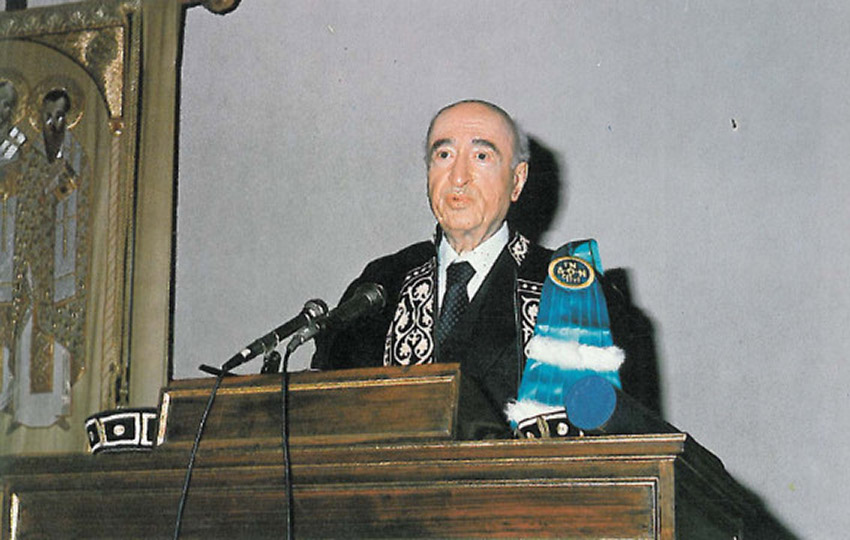
22. Thanassis Skordalos
Thanassis Skordalos was a musician from Crete, noted for playing the lyra, the bowed string instrument of Crete and the most famous surviving form of the medieval Byzantine lyra. He was born on Friday, December 10, 1920, in the village Spili of Saint Basil in Rethymno Prefecture, Crete. Skordalos finished grammar school in Spili. He started playing the Lyra at a young age, around nine years old and by the age of 12, he was performing at traditional festivals around Crete. Skordalos performed in front of the Cretans in Athens – at the historical music hall “Vizantio” in Omonoia Square. His first recording was in 1946 with the famous “Spiliano Syrto”, where Giannis Markogiannakis played the lute. In 1947, when he was 27 years old, he was positioned at the Security Services of the National Bank of Greece, from where he later retired. Skordalos died on April 23, 1998, at 77, in Heraklion, Crete.
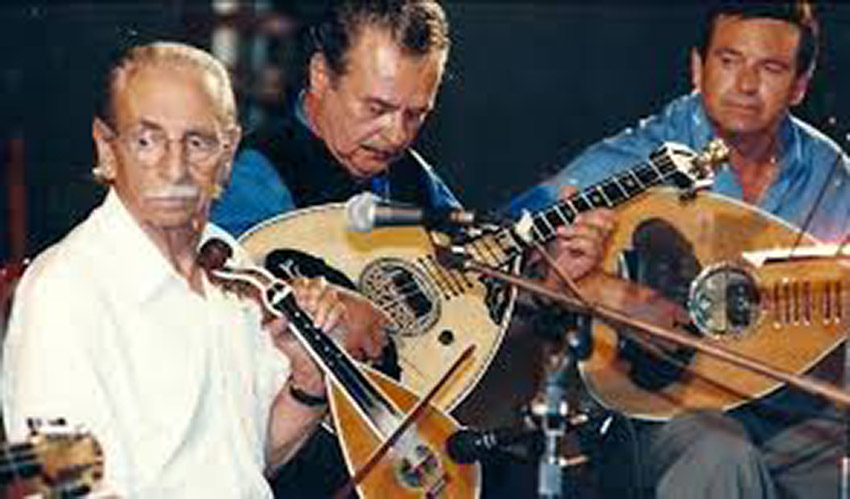
Thanassis Skordalos made a significant contribution to the preservation and promotion of Cretan music. He performed in most countries where Cretan immigrants are found, like the United States, Australia, Canada and many African countries. Skordalos and Kostas Mountakis are the Lyra players who offer the most to Cretan music. His legacy lasted for sixty years. One of his notable accomplishments was introducing the lyra, a traditional Cretan instrument, to wider audiences both within Greece and internationally through his performances and recordings.
23. Loudovikos ton Anogeion
Loudovikos ton Anogeion is the performing name of George Dramountanis, a contemporary Greek musician and composer from Crete. He was born on Sunday, January 28, 1951, in the village of Anogia, in the mountainous region of Rethymno, Crete. Loudovikos spent much of his childhood in Anogia, where the island’s rich musical traditions profoundly influenced him.
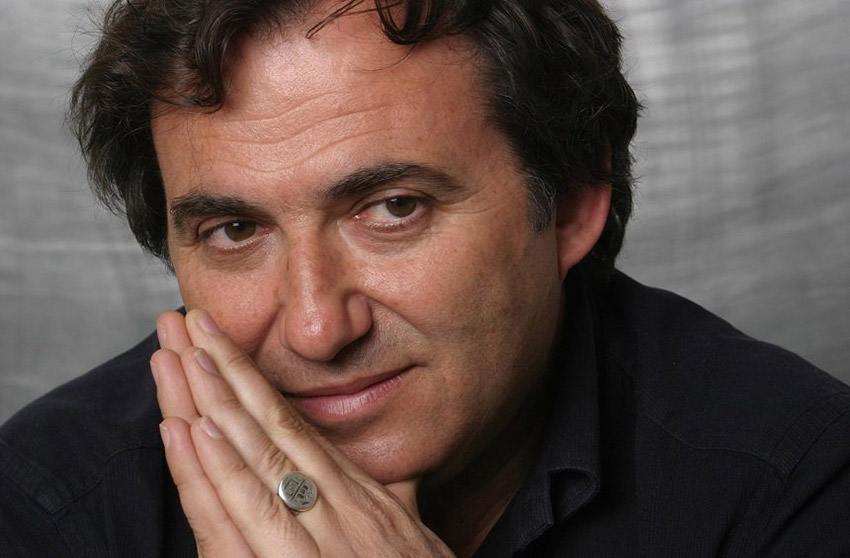
Loudovikos ton Anogeion has made a significant contribution to the preservation and promotion of Cretan music. He is famous for his skillful incorporation of traditional Cretan instruments, such as the lyra and the laouto, into his compositions. His music often features mantinades, the poetic couplets integral to Cretan folk culture. Loudovikos has collaborated with various Cretan musicians and has been instrumental in introducing Cretan music to a broader audience in Greece and internationally. One of his most notable accomplishments is his involvement in the soundtrack of the 1966 film “El Greco”, directed by Giannis Smaragdis, which brought Cretan music to the forefront of Greek cinema.
24. Nikos Machlas
Nikos Machlas is a retired Greek former professional footballer who played as a striker. Nikos Machlas was born Saturday, June 16, 1973, in Heraklion, Crete, Greece. He began his professional football career with OFI Crete, debuting in February 1991 against Panionios. Machlas spent the first six seasons of his career with OFI Crete before moving to Dutch side Vitesse Arnhem in 1996. After a successful stint with Vitesse, he joined Eredivisie giants Ajax Amsterdam in June 1999 for a then-club record transfer fee of $8.6 million. Machlas played for Ajax until 2003, winning the Eredivisie and KNVB Beker in the 2001-02 season. He had brief spells with Sevilla and Iraklis and returned to OFI Crete before finishing his career with APOEL in Cyprus, where he announced his retirement in 2008.

Nikos Machlas made significant contributions to football in Crete and Greece. He is the all-time top goalscorer for OFI Crete, having scored 73 goals during his tenure with the club. Machlas represented the Greek national team, earning 61 caps and scoring 18 goals. His most notable achievement was winning the European Golden Boot for the 1997-98 season while playing for Vitesse Arnhem, where he scored an impressive 34 goals in just 32 games. This feat earned him a lucrative move to Ajax and cemented his status as one of the most prolific strikers in Europe at the time. Machlas’ success on the international stage and his goalscoring exploits with various clubs made him a celebrated figure in Greek football.
Who are the most famous Cretans who hold an exceptional record?
Listed below are the most famous Cretans who hold a unique record:
- Georgios Psychoundakis: Georgios Psychoundakis, born in Asi Gonia, Crete, in Wednesday, November 3, 1920, was a Greek Resistance fighter during World War II. He is famous for his role as a messenger in the Cretan Resistance, where he traversed the rugged terrain of Crete to deliver vital messages and intelligence to Allied forces.
- Eleftherios Venizelos: Eleftherios Venizelos, born in Mournies, Crete, in Tuesday, August 23, 1864, was a prominent Greek statesman and prime minister. He played a crucial role in the liberation of Crete from Ottoman rule and the unification of Crete with Greece. Venizelos served as Greece’s prime minister for 12 years, during which he implemented significant reforms and led the country through World War I and the Greco-Turkish War. He is regarded as one of modern Greek history’s most important political figures.
- Psarantonis: Psarantonis, born Antonis Xylouris in Anogia, Crete, in Monday, September 6, 1937, is a famous Cretan lyra player and singer. He is known for his exceptional skill in playing the lyre, a traditional Cretan stringed instrument and his powerful, emotional vocals. Psarantonis has played a significant role in preserving and promoting conventional Cretan music in Greece and internationally.
- Daskalogiannis: Daskalogiannis, born Ioannis Vlachos in Anopoli, Crete, in 1722, was a Cretan rebel leader who led a famous uprising against Ottoman rule in Crete in 1770. He is known for his exceptional bravery and leadership skills, as he united various Cretan clans and led them in a fight for independence. Although the uprising was unsuccessful, Daskalogiannis’s actions inspired future Cretan generations to continue fighting for freedom. He was captured and executed by the Ottomans in 1771, becoming a symbol of Cretan resistance and heroism.
Who are the most famous Cretan artists?
Listed below are the most famous Cretan artists:
- El Greco: Domenikos Theotokopoulos, widely known as El Greco, was born in Crete in Wednesday, October 1, 1541. He was a prominent painter, sculptor and architect of the Spanish Renaissance. Initially trained in the Byzantine art tradition in Crete, he moved to Italy and Spain, where he developed his distinctive style characterized by elongated figures and intense colors. His works, such as “The Burial of the Count of Orgaz” and “View of Toledo”, are considered masterpieces of Western art and have greatly influenced the development of modern art.
- Nikos Kazantzakis: Nikos Kazantzakis, born in Heraklion, Crete, in Sunday, February 18, 1883, was a famous Greek writer, philosopher and playwright. He is best known for his novels “Zorba the Greek” and “The Last Temptation of Christ”, which have been translated into numerous languages and adapted into films. Kazantzakis’s works often explore existentialism, religion and the human condition. He was nominated for the Nobel Prize in Literature nine times and is considered one of the most important Greek writers of the 20th century.
- Konstantinos Volanakis: Konstantinos Volanakis, born in Heraklion, Crete, in Friday, March 17, 1837, was a Greek painter known for his seascapes and coastal scenes. He studied at the Athens School of Fine Arts and later in Munich, where the German Romantic movement influenced him. Volanakis’s paintings are characterized by their realistic depiction of light and water and his works are considered some of the finest examples of Greek marine art.
- Yannis Tsarouchis: Yannis Tsarouchis, born in Piraeus, Greece, in Thursday, January 13, 1910 to a Cretan father, was a Greek painter and set designer. He is known for his unique style, combining Greek folk art, Byzantine art and modernism. Tsarouchis’s works often depict male figures and explore themes of identity, sexuality and Greek culture. He was a prominent figure in the Greek art scene of the 20th century and his works have been exhibited in major museums and galleries worldwide.
Who are the most famous Cretan singers and musicians?
Listed below are the most famous Cretan singers and musicians:
- Nikos Xylouris: Nikos Xylouris, born in Anogia, Crete, in 1936, was a famous Greek singer and lyra player. Known as the “Archangel of Crete”, Xylouris significantly popularized Cretan music throughout Greece. His powerful voice and virtuosic lyra playing earned him a devoted following and his songs often dealt with themes of love, loss and the struggles of the Cretan people. Despite his untimely death in 1980, Xylouris remains one of the most beloved and influential figures in Cretan music.
- Psarantonis: Psarantonis, born Antonis Xylouris in Anogia, Crete, in Monday, September 6, 1937, is a famous Cretan lyra player and singer. The younger brother of Nikos Xylouris, Psarantonis, has carried on his family’s musical legacy and has become a legend in his own right.
- Vassilis Skoulas: Vassilis Skoulas, born in Chania, Crete, in Sunday, February 3, 1946, was a Greek singer and songwriter. Skoulas collaborated with many prominent Greek composers and lyricists and his music blended traditional Cretan elements with contemporary styles. He gained popularity throughout Greece in the 1960s and 1970s and remained beloved in Cretan music until he died in 2004.
- Thanassis Skordalos: Thanassis Skordalos, born in Rethymno, Crete, in Friday, December 10, 1920, was a Greek lyra player and composer. Considered one of the greatest lyra players of the 20th century, Skordalos was known for his technical skill, innovative style and ability to express deep emotions through his music.
- Loudovikos ton Anogeion: Loudovikos ton Anogeion, born Loudovikos Markakis in Anogia, Crete, in Sunday, January 28, 1951, is a Greek singer, songwriter and laouto player. Known for his unique voice and fusion of traditional Cretan music with contemporary elements, Loudovikos has gained a large following in Greece and the Greek diaspora. His songs often celebrate the culture and history of Crete and he has collaborated with many prominent Greek musicians.
Who are the most famous Cretan actors?
Listed below are the most famous Cretan actors:
- Irene Papas: Irene Papas, born Irene Lelekou in Chiliomodi, Greece, on Tuesday, September 3, 1929, was a famous Greek actress with Cretan roots. She began her acting career in Greece before gaining international recognition for her roles in films such as “The Guns of Navarone” (1961) and “Zorba the Greek” (1964). Papas was known for her powerful performances and ability to portray strong, complex characters.
- Manos Katrakis: Manos Katrakis, born in Kissamos, Crete, on Friday, August 14, 1908, was a prominent Greek actor and director. He began his career in theater before transitioning to film in the 1940s. He appeared in over 60 films throughout his career, including “The Counterfeit Coin” (1955) and “The Red Lanterns” (1963). Katrakis also served as the director of the National Theatre of Greece and was a crucial figure in the development of modern Greek theater.
- Eleni Kastani: Eleni Kastani, born in Sitia, Crete, on Saturday, March 10, 1956, is a Greek actress known for her work in film and television. She studied at the National Theatre of Greece and made her film debut in 1981. Kastani gained popularity for her roles in Greek films such as “Rembetiko” (1983) and “The Suspended Step of the Stork” (1991). She has also appeared in numerous television series and has been honored with several awards for her performances, including the Best Actress award at the Thessaloniki Film Festival.
Who are the most famous Cretan sportsmen?
Listed below are the most famous Cretan sportsmen:
- Georgios Samaras: Georgios Samaras (also known as Giorgos Samaras) is a Greek former professional footballer who played as a striker or winger. Georgios Samaras was born on Thursday, February 21, 1985, in Heraklion, the capital city of the Greek island of Crete. In 1994, at 10, Samaras joined his boyhood club, OFI Crete, where his father was playing. He credits his father for helping start his football career, as his influence meant that Samaras trained every day during his childhood. In 2001, Samaras left Crete to join Dutch club Heerenveen.
- Nikos Machlas: Nikos Machlas, born in Heraklion, Crete, on Saturday, June 16, 1973, is a retired Greek football player. He played as a striker and is considered one of the greatest Greek footballers ever. Machlas began his career with OFI Crete before moving to Vitesse Arnhem in the Netherlands, where he became the Eredivisie’s top scorer in the 1997-98 season. He also played for Ajax and Sevilla, among other clubs. Machlas made 61 appearances for the Greek national team, scoring 18 goals and represented Greece at the 1994 World Cup and Euro 2004, where Greece famously won the tournament.
Who are the most famous Cretan chefs?
Listed below are the most famous Cretan chefs:
- Giannis Baxevanis: Giannis Baxevanis, born in Rethymno, Crete, on Friday, November 23, 1962, is a famous Greek chef and cookbook author. He is known for his innovative approach to traditional Cretan cuisine and has played a significant role in popularizing Cretan dishes in Greece and internationally. He opened his first restaurant in Australia called “Orexi by Baxevanis” in Canberra in partnership with the Hellenic Club in 2024
- Nikolaos Chomatas: Nikolaos Chomatas is a famous Cretan chef who has been instrumental in promoting Cretan cuisine worldwide. He was born in Friday, March 17, 1933 in Heraklion, Crete, Chomatas has worked in numerous prestigious restaurants across Greece and abroad. He is known for his innovative approach to traditional Cretan dishes, incorporating modern techniques while preserving the authenticity of flavors. In September 2021, Chomatas participated on the well-known SKAI TV reality show “Top Chef”.
What are the most fun facts about Crete?
Listed below are the fun facts about Crete:
- Crete is home to the Palace of Knossos: Crete is home to the Palace of Knossos, the largest Bronze Age archaeological site on the island. The palace, built in 1900 BC, was the center of the Minoan civilization. It features frescoes, a complex layout and a rich history. The site was discovered in 1878 and excavated by British archaeologist Sir Arthur Evans in the early 20th century.
- The Cretan diet is one of the healthiest in the world: The Cretan diet is one of the healthiest in the world. It emphasizes fruits, vegetables, whole grains, legumes and olive oil. Cretans consume meat and fish in moderation and often enjoy meals with family and friends. The Cretan diet has influenced the well-known Mediterranean diet and has gained recognition worldwide for its health benefits. It is one of the facts in Crete.
- Crete features Europe’s longest gorge: Crete features Europe’s longest gorge, the Samaria Gorge. The gorge stretches for 16 kilometers (10 miles) and reaches a width of 150 meters (492 feet) at its widest point. It is part of the White Mountains and is home to several endemic species of flora and fauna. Visitors can hike through the gorge, starting from the Omalos plateau and ending at the seaside village of Agia Roumeli.
- Elafonisi Beach is known for its pink sand. Elafonisi Beach, located on the southwest coast of Crete, is known for its pink sand. The sand gets its unique color from crushed seashells and coral fragments. The beach is separated from the mainland by a shallow lagoon, which visitors can easily wade through. Elafonisi Beach is a protected nature reserve home to several rare plant species. It is a popular spot for swimming, sunbathing and windsurfing.
- Crete is known for producing raki: Crete is known for producing raki, a clear, strong spirit made from distilled grapes. Raki is an integral part of Cretan culture and hospitality. It is often served as a welcome drink to guests and is enjoyed during social gatherings and meals. Producing raki involves distilling the leftover skins, seeds and stems of grapes after the winemaking process.
Is it expensive to visit Crete?
Yes, Crete can be expensive to visit. Crete can be considered a moderately priced destination compared to other Greek islands or European tourist spots. Budget-conscious travelers can find accommodations ranging from €20 ($22, £18) to €50 ($54, £45) per night, while luxury resorts can cost upwards of €150 ($163, £135) per night. Dining out can be affordable, with traditional Greek tavernas offering meals for €10 ($11, £9) to €20 ($22, £18) per person. Prices in Crete can be higher in tourist hotspots. Transportation costs vary, with bus prices starting at €2 ($2, £2) for short trips and rental cars averaging €40 ($43, £36) to €60 ($65, £54) per day. Many of Crete’s beautiful beaches and historical sites are accessible for free or at low entrance fees, while organized tours and activities can add to the overall cost. Visitors can expect to spend €50 ($54, £45) to €100 ($109, £90) per day, depending on their travel style and preferences.
What are the most popular holiday dates in Crete?
Crete has the four most popular holiday dates. Firstly, Easter, which usually falls in May 5, is the most significant holiday in Crete, marked by elaborate religious ceremonies, family gatherings and the traditional feast of roasted lamb. Secondly, August 15th, known as the Dormition of the Virgin Mary or Dekapentavgoustos, is a significant religious and cultural celebration, with many Cretans returning to their ancestral villages to attend church services and enjoy family reunions. Thirdly, October 28th, known as Ohi Day or No Day, commemorates Greece’s rejection of the Italian request in 1940 and the country’s entry into World War II, with patriotic parades and ceremonies across Crete. Lastly, Carnival or Apokries, is a festive period preceding Lent, usually in February or March, characterized by street parties, masquerades and the consumption of traditional dishes. These holiday dates in Crete showcase the deep connection between religious faith, cultural identity and family bonds in Cretan society, with many businesses and schools closing to allow for widespread participation in the celebrations.
What are the top destinations to visit in Crete?
Listed below are the top destinations to visit in Crete:
- Heraklion: Heraklion, the capital of Crete, is a must-visit destination in Crete. It is home to the famous Palace of Knossos, an archaeological site dating back to the Minoan civilization. The city also features a Venetian fortress, an archaeological museum with an extensive collection of Minoan artifacts and a city center with markets and cafes.
- Chania: Chania, located on the northwestern coast of Crete, is another popular destination in Crete. The Samaria Gorge, Europe’s longest gorge, is easily accessible from Chania, offering a challenging hike through natural scenery. Visitors can also explore the many beaches in the region, ranging from sandy stretches to secluded coves.
- Rethymno: Rethymno, located between Heraklion and Chania, is one of the best destinations in Crete, known for its well-preserved Venetian architecture. The old town is dominated by the Fortezza, a 16th-century Venetian fortress offering views of the city and the sea. The city hosts several cultural events throughout the year, including the Renaissance Festival and the Cretan Diet Festival.
- Agios Nikolaos: Agios Nikolaos, a coastal town in eastern Crete, is a popular destination for its setting and laid-back atmosphere. The city centers around Lake Voulismeni, a small, deep lake connected to the sea. Visitors can stroll along the lake’s shore, lined with cafes and restaurants or explore the nearby beaches, such as the sheltered Kitroplatia Beach.
- The Lasithi Plateau: The Lasithi Plateau, located in the mountains of eastern Crete, is a unique destination known for its windmills and fertile soil. The plateau is dotted with traditional villages, orchards and caves. Visitors can explore the Dikteon Cave, believed to be the birthplace of Zeus in Greek mythology or hike the numerous trails crisscrossing the plateau.









